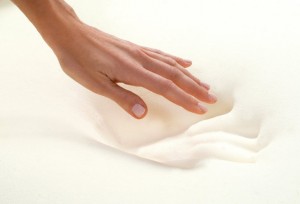UD has a broad and deep pool of readers and occasional contributors from across the world that have a lot to say, things that are well worth pondering. In this case, I am more than happy to host a guest post in which physicist and computer scientist ES (who hails from Russia) argues the thesis:
No linguistic processing occurs in the case of memory of a material that is exclusively explainable in terms of physical interactions between particles of that material, whereas the basic architecture of life is inherently linguistic.
Let us now ponder:
>>>>>>>>>>>>>>>>>>>>>
Biological memory vs. memory of materials
[Eugen S, UD November 7, 2016]
Contemporary technology allows us to make self-deploying structures that can revert to their previous state. This kind of structures are used in space, medicine, forensic science, navigation, etc. They are said to have memory of shape or even possess heredity. Wait a minute… Everybody knows that heredity is a property of life. Isn’t that interesting?
Let’s take a quick look at the kind of memory a material like a smart alloy or a polymer foam has and compare it with biological memory. Let’s see if the common terminology reflects any inherent phenomenological similarities.
Materials with memory
The memory of a material is exclusively a result of physical interactions between its particles. A great many processes in nature, including memory of shape, can be thought of as manifestations of one powerful physical principle, the principle of minimum total potential energy.
The minimum total potential energy principle is a fundamental concept that describes the physical behaviour of matter. It dictates that (at low temperatures) a structure or body shall deform or displace to a position that (locally) minimizes the total potential energy, with the lost potential energy being converted into kinetic energy (specifically heat) [Wikipedia, Minimum total potential energy principle]. In other words, it is a tendency of a physical system towards an equilibrium state.
This principle is the basis of many natural phenomena:
- mechanical or electromagnetic oscillations;
- elliptic shapes of planetary orbits;
- ellipsoidal shapes of planets and stars;
- stability of mechanical structures;
- stability of mechanical systems’ motion;
- spherical shapes of soap bubbles;
- crystallization;
- precipitation;
- convection patterns;
- interference patterns;
- sand dunes;
- Moire stripes;
- etc.
Smart alloys such as nickel titanium (nitinol) exhibit two closely related and unique properties: shape memory effect (SME) and superelasticity (SE) (also called pseudoelasticity (PE)) [Wikipedia, Shape memory alloys]. Shape memory is the ability of nitinol to undergo deformation at one temperature, then recover its original, undeformed shape upon heating above its transformation temperature. Superelasticity occurs at a narrow temperature range just above its transformation temperature; in this case, no heating is necessary to cause the undeformed shape to recover, and the material exhibits enormous elasticity, some 10-30 times that of ordinary metal [Wikipedia, Nickel-titanium].
In the case of memory foam, the effect of the long term preservation of shape is achieved by maximizing plasticity characteristics of an artificial polymer.
In all these cases, an elementary particle is mechanically stressed, which causes its deformation over time. Deformation may be caused by external force or temperature gradients in the alloy. Particles of matter under stress will tend to move in such a way that their total potential energy is minimal.
Fig.1. Smart alloys are used in mechanical structures where regaining the original form is critical. Source: GCSE Chemistry.
In more complex cases, the behaviour of a material may depend not only on its mechanical properties and the current state (temperature, alloy composition, etc.) but also on previous states. Examples of such systems and processes include:
- self-induced oscillatory processes, such as the famous chemical clock (e.g. the Belousov-Zhabotinski autocatalytic reaction);
- hysteretic effects;
- fluctuations far from the thermodynamic equilibrium;
- chaos.
The behaviour of these non-linear systems is also exclusively a result of particle dynamics even though its detailed scientific description would require far more sophisticated modelling than for some of the previous examples.
Fig.2. Mechanical characteristics of memory foam are optimized for long term plasticity. These materials are heavily used in medicine, forensic science, fine arts, etc.
Biological memory
In organisms, in contrast, heredity is organized using symbolic memory that is non-existent in naturally occurring non-living systems. The functioning of biological heredity depends on interpretation of material tokens (signs) that prescribe the motion of elementary particles that the genetic information translation system consists of. Triplets of messenger RNA nucleotides (they are called codons) acting as tokens are interpreted by the translation system to evoke specific physical effects, i.e. the synthesis of a polypeptide foldable into functional proteins, in accordance with a translation protocol.

Fig.3. Genetic information translation process. Wikipedia.
The necessary condition a physical structure must satisfy to serve as a symbolic information storage is that it should be physically indeterminate (energy degenerate). Here is how physicist Howard Pattee formulates it: […A]ll symbol vehicles obey physical laws and have, in principle, a physical description, but that does not imply that they are physically determined. Quite the contrary is true. Such a degenerate sequence structure can have an immense number of physically indeterminate sequences [Pattee 2007]. An example of such symbolic information storage is messenger RNA. It is capable of serving as information medium because any of the four nucleotides (A, C, U or G) that are the building blocks of RNA oligomers can polymerize any other in aqueous solutions without any physico-chemical bias.
The codon-to-amino acid correspondence is realized by transport RNAs charged with the ‘correct’ amino acids corresponding to messenger RNA codons. The correspondence between codons and the twenty proteinogenic amino acids exists as a small set of formal rules known as the genetic code.
So the functioning of biological heredity is irreducible to exclusively the dynamics of elementary particles in the field of intermolecular forces. The dynamics of the system itself is prescribed by the sequence of codons in messenger RNA.
What does this all mean?
As we can see, there is no inherent similarity between the physical memory of shape in a material and the inherently formal, symbolic genetic memory of organisms. Biological memory as a phenomenon is totally different from memory of shape. Clearly, then, when we say that a material has memory we only draw a weak superficial analogy to the biological heredity mechanism.
Life is distinguished from non-life by its dependence on material construction under the control of coded symbolic description [Pattee 2007].
The messenger RNA translation system is a linguistic machine. A linguistic machine is the interpreter in the following tuple:
{data, protocol, interpreter}.
A linguistic machine takes as input signals from its environment or from a channel of communication with other linguistic machines and interprets them as data according to a specified protocol (a set of rules) and performs actions meaningful in the context where the machine operates. Examples of linguistic machines are artificial information processing systems (such as autopilots, automated decision support systems, etc.), computer language processors and even mathematics.
No linguistic processing occurs in the case of memory of a material that is exclusively explainable in terms of physical interactions between particles of that material, whereas the basic architecture of life is inherently linguistic.
Resources:
- Wikipedia.
- Howard Pattee. The Physics and Metaphysics of Biosemiotics. In Biosemiotics: Information, Codes and Signs in Living Systems. M. Barbieri (ed.), 2007, pp.219-234.
>>>>>>>>>>>>>>>>>>>>>>>>>>>
A distinction well worth pondering. Let us now pause and discuss ES’s thesis and substantiation. END

